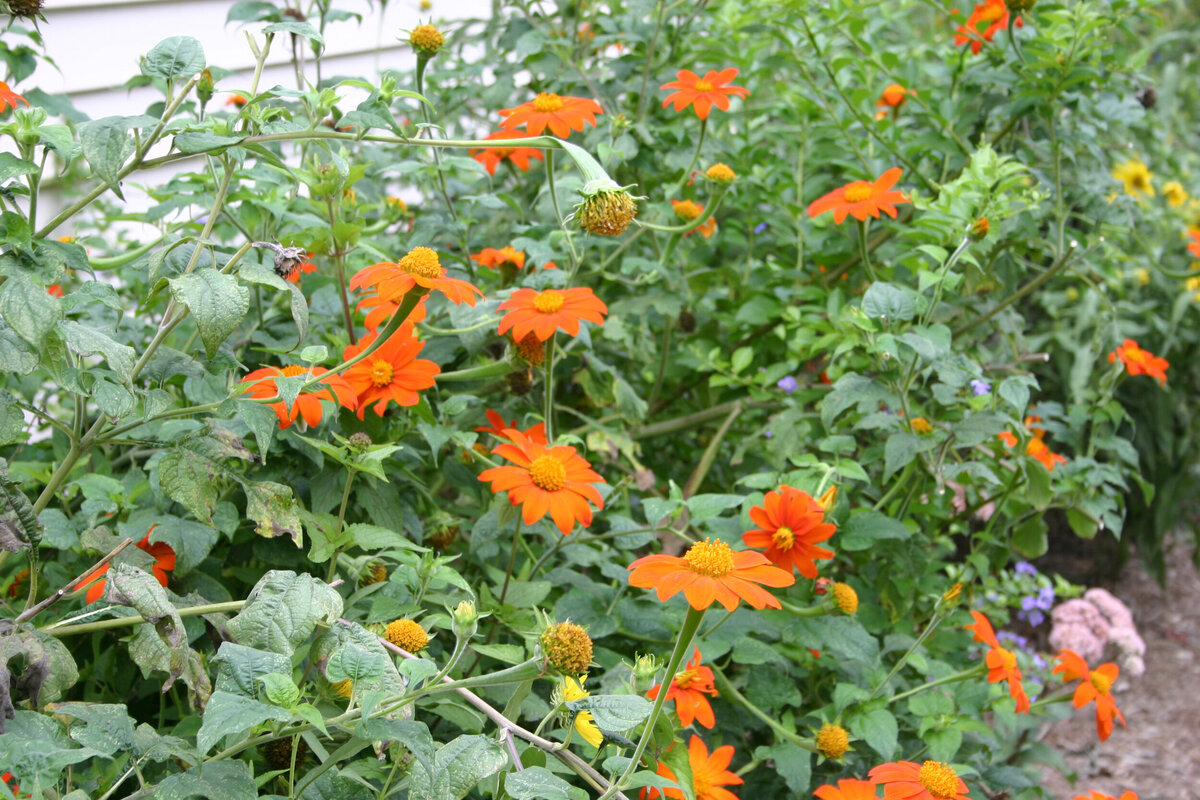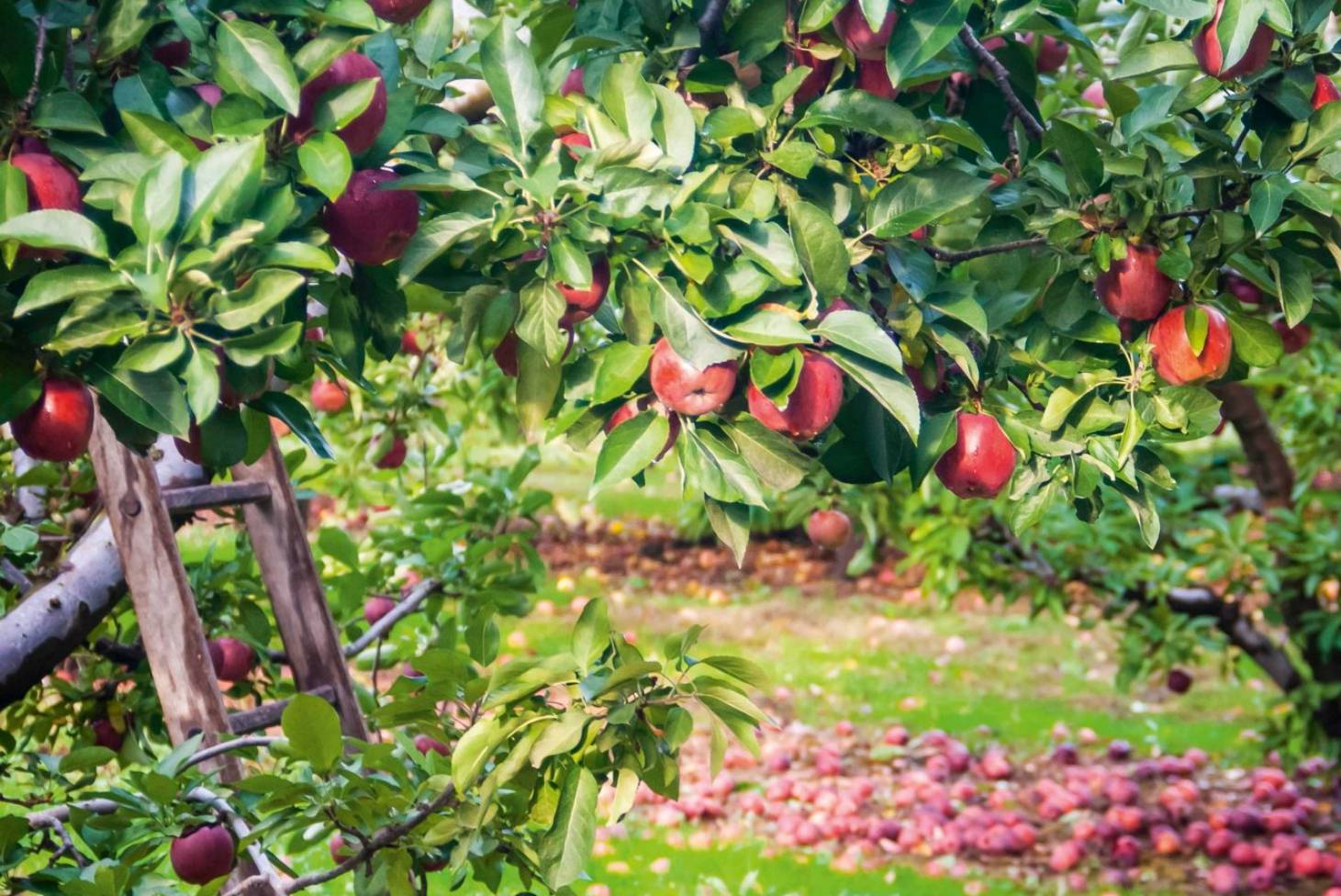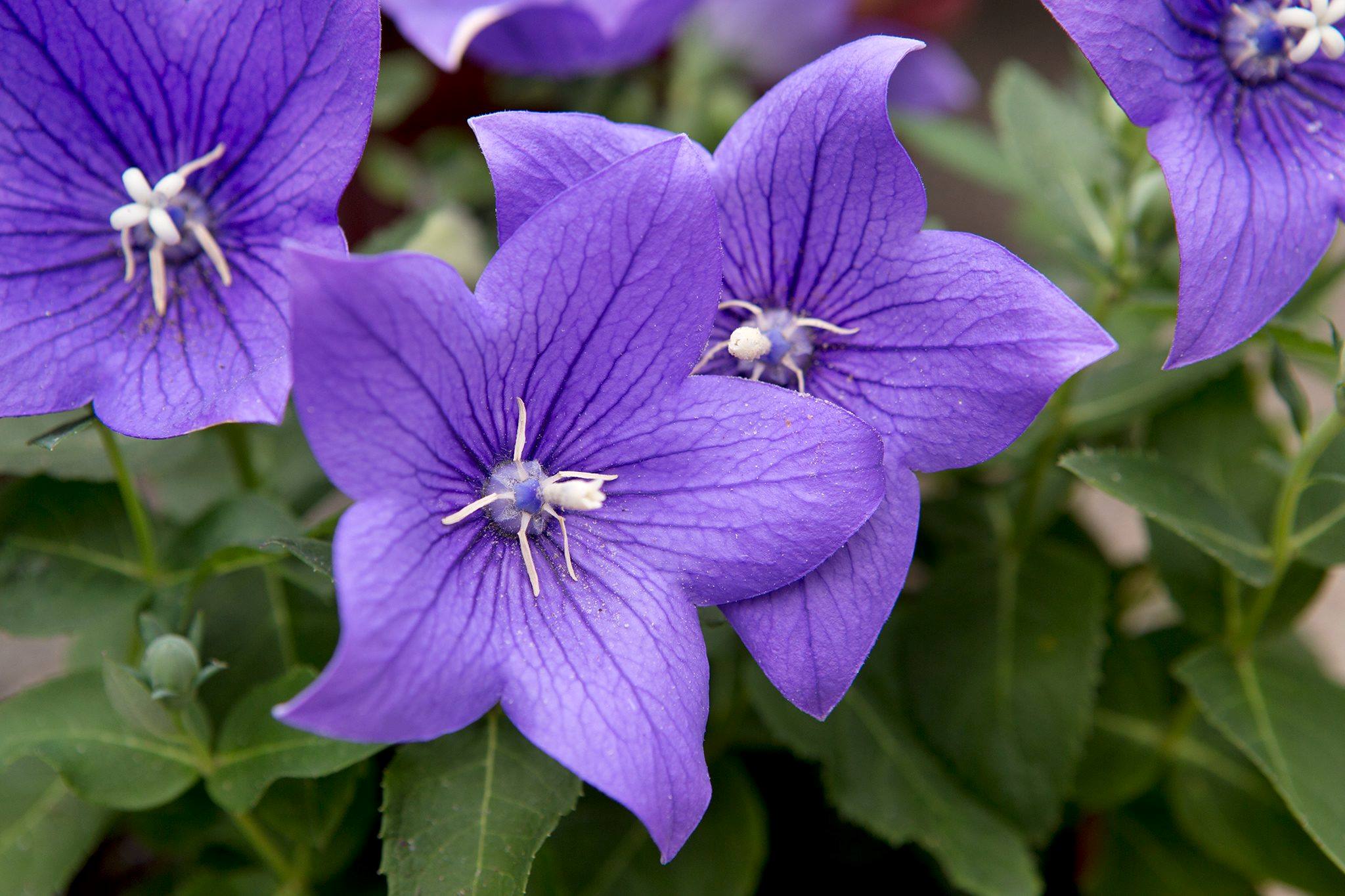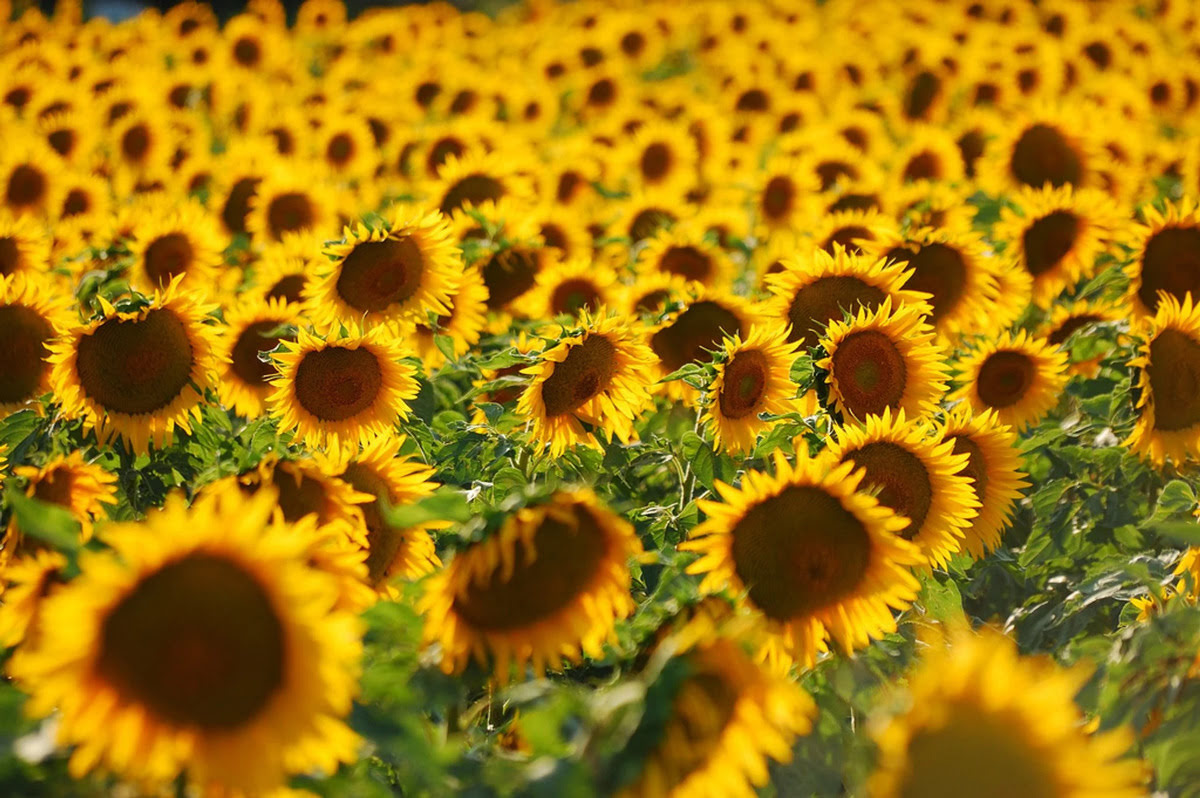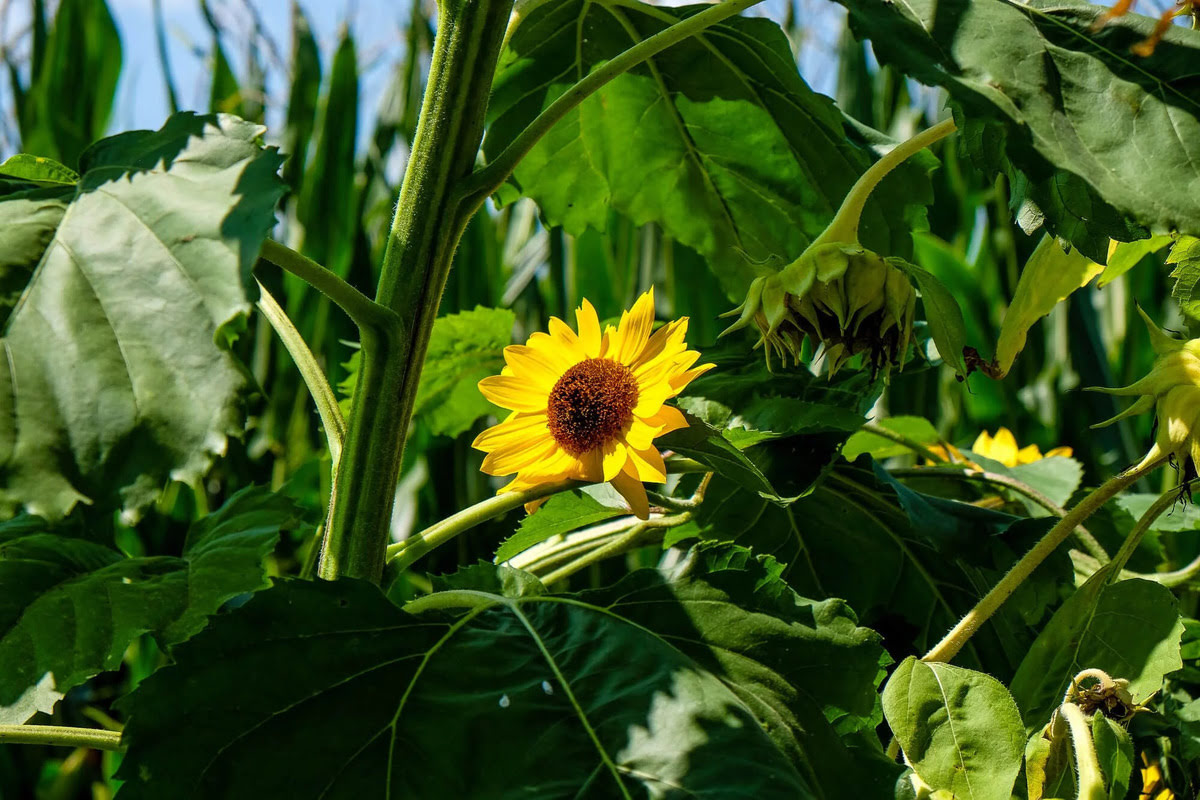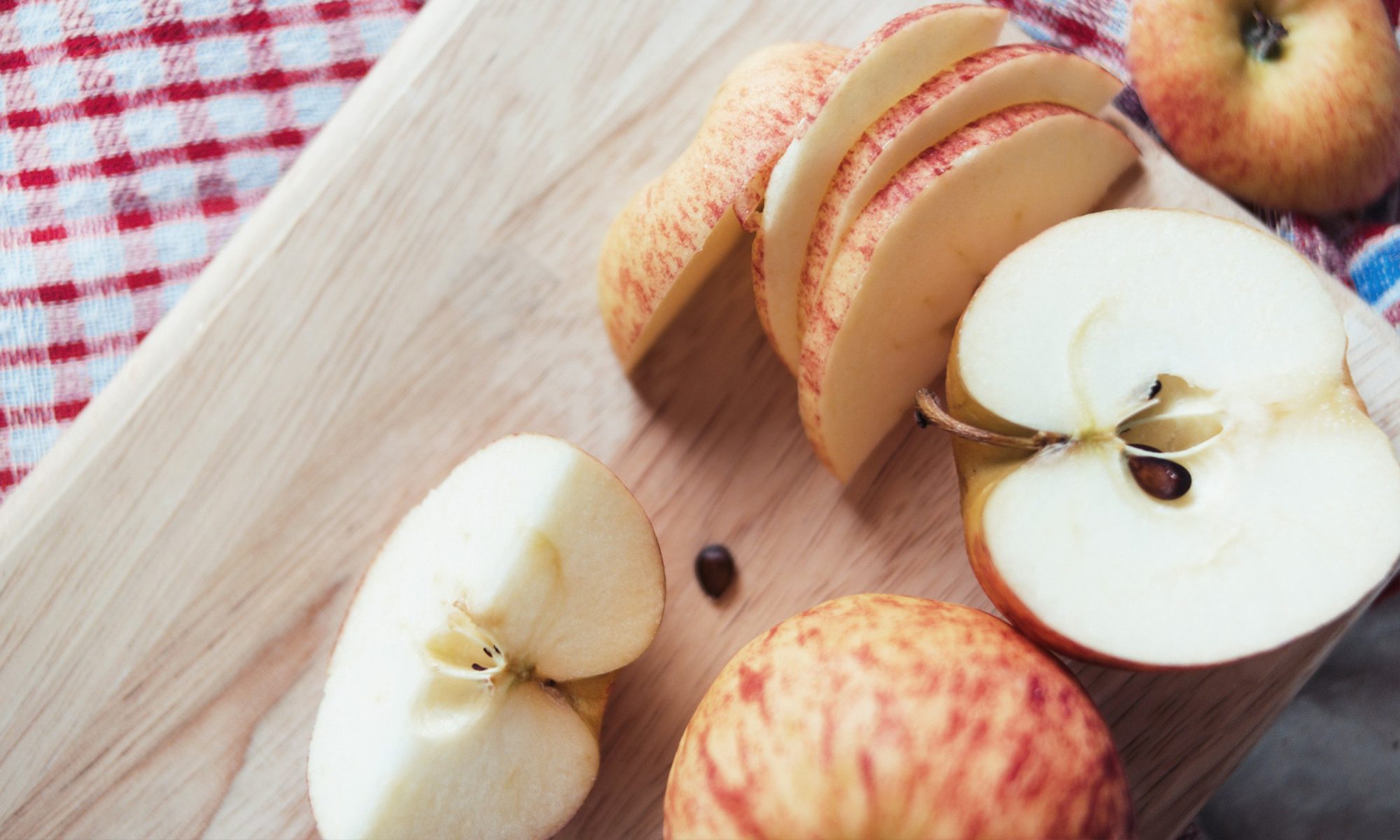Home>Types of Gardening>Edible Gardening>When Do Apple Trees Bloom
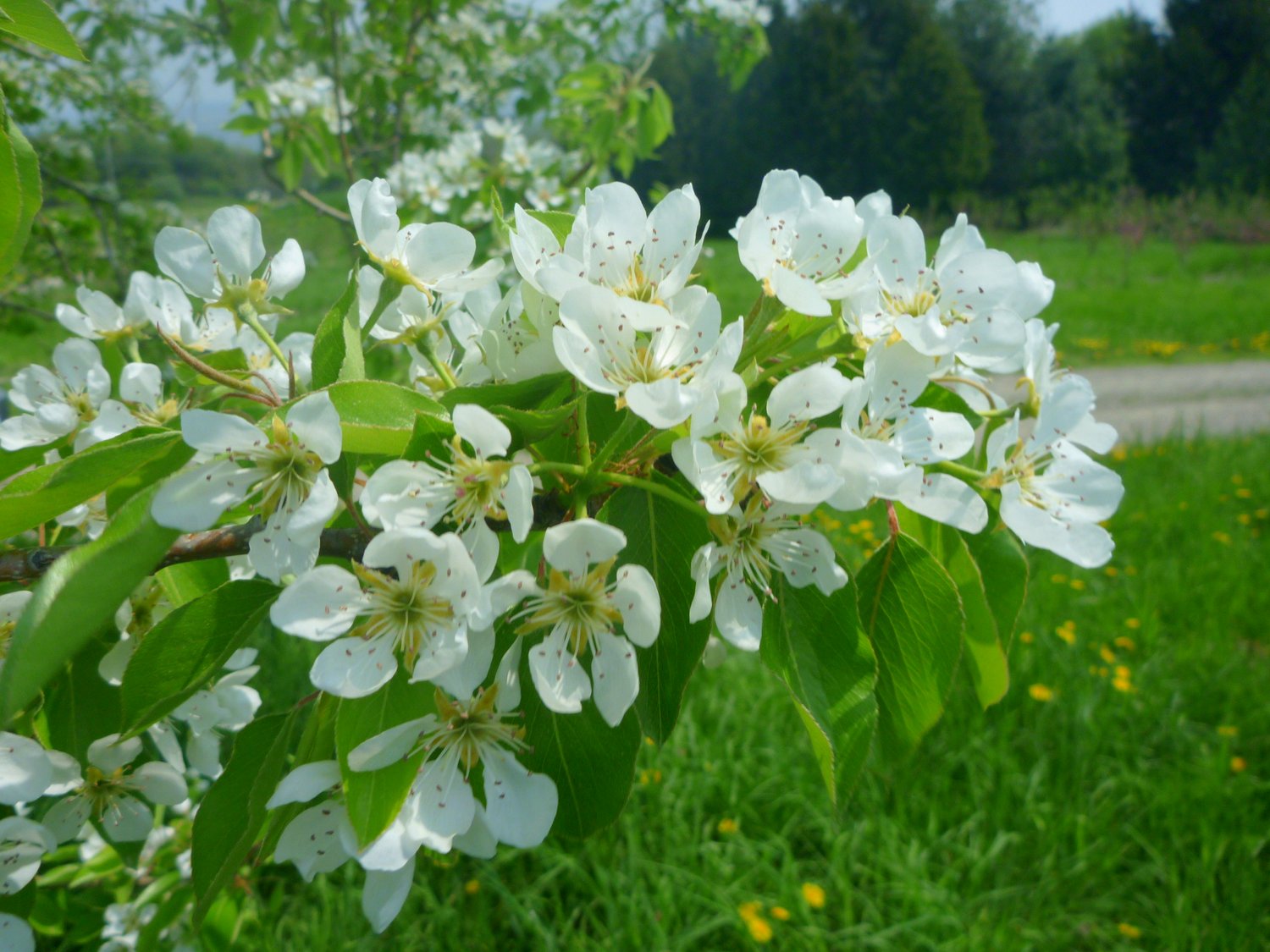

Edible Gardening
When Do Apple Trees Bloom
Published: November 6, 2023
Discover when apple trees bloom in this comprehensive guide to edible gardening. Get expert tips and advice on growing and caring for your own apple trees.
(Many of the links in this article redirect to a specific reviewed product. Your purchase of these products through affiliate links helps to generate commission for Chicagolandgardening.com, at no extra cost. Learn more)
Table of Contents
- Introduction
- Factors Affecting Apple Tree Bloom
- Chilling Requirements of Apple Trees
- Effect of Temperature on Apple Tree Bloom
- Role of Day Length in Apple Tree Bloom
- Varieties of Apple Trees and Bloom Times
- Early-Blooming Apple Tree Varieties
- Late-Blooming Apple Tree Varieties
- Environmental Factors Impacting Apple Tree Bloom
- Tips for Promoting Apple Tree Bloom
- Conclusion
Introduction
Edible gardening has gained immense popularity in recent years, as more and more people are realizing the joys and benefits of growing their own food. Among the many fruits and vegetables that can be cultivated in a home garden, apple trees stand out as an iconic and rewarding choice.
Apple trees not only offer a bountiful harvest of delicious fruit, but they also add beauty and charm to any garden landscape. However, for those new to edible gardening, understanding when apple trees bloom and the factors that influence their bloom time is essential for successful cultivation.
In this article, we will explore the various factors that affect the bloom of apple trees, including chilling requirements, temperature, day length, and environmental factors. Additionally, we will discuss different varieties of apple trees and their bloom times, as well as provide tips for promoting abundant blossom and fruit production.
Whether you are a seasoned gardener looking to expand your edible garden or a beginner eager to embark on this rewarding journey, understanding the bloom process of apple trees will help you plan and nurture your garden more effectively.
Factors Affecting Apple Tree Bloom
Apple tree bloom is influenced by a combination of several factors, including chilling requirements, temperature, day length, and environmental conditions. Let’s take a closer look at each of these factors to understand their impact on apple tree bloom.
Chilling Requirements: Apple trees have a chilling requirement, which is the minimum period of cold temperatures they need to experience in order to break dormancy and initiate bloom. The chilling requirement varies depending on the apple tree variety, with some requiring fewer chilling hours and others needing more. Failure to meet the chilling requirement can result in reduced or delayed bloom.
Temperature: Temperature plays a crucial role in apple tree bloom. During the winter, apple trees go through a rest period where they accumulate the necessary chilling hours. As temperatures begin to rise, this signals the tree to break dormancy and begin the blooming process. However, extreme temperature fluctuations during the bloom period can have detrimental effects, causing flower damage or poor fruit set.
Day Length: Day length, also known as photoperiod, is another factor that influences apple tree bloom. As the days lengthen and nights shorten, it triggers hormonal changes in the tree, promoting floral development. Different apple tree varieties have varying sensitivity to day length, with some being more influenced by shorter days while others respond more to longer days.
Environmental Factors: In addition to chilling requirements, temperature, and day length, environmental factors such as sunlight, humidity, and rainfall can impact apple tree bloom. Sufficient sunlight is essential for proper photosynthesis and carbohydrate production, which is necessary for flower formation and fruit development. Adequate humidity is important to prevent flower desiccation, while balanced rainfall ensures proper hydration.
Understanding these factors and their interplay is crucial for successful apple tree bloom. By considering the specific requirements of your apple tree variety and optimizing the environmental conditions, you can create an ideal environment for thriving blooms and a fruitful harvest.
Chilling Requirements of Apple Trees
Chilling requirements are an important consideration when it comes to understanding the bloom cycle of apple trees. This refers to the period of cold temperatures needed by apple trees during the winter months to break dormancy and initiate the bloom process in the spring.
Apple tree varieties have varying chilling requirements, typically measured in chilling hours or chilling units. A chilling hour is defined as one hour of exposure to temperatures between 32°F (0°C) and 45°F (7°C), while a chilling unit is a more precise measurement that takes into account the temperature fluctuations within the chilling range.
The specific chilling requirement of an apple tree is determined by its genetic makeup and is influenced by factors such as its geographic origin and the natural climate where it grows. Some apple tree varieties have low chilling requirements and can thrive in areas with mild winters, while others require an extended period of cold temperatures and are best suited for regions with colder climates.
Meeting the chilling requirement of an apple tree is crucial for ensuring proper bloom and fruit set. Insufficient chilling hours can result in delayed bloom or reduced flower production, while excessive chilling can lead to erratic blooming patterns or premature bud break. It is important to strike a balance and provide your apple tree with the necessary chilling hours within its required range.
To determine the chilling requirement of your apple tree variety, consult reputable sources or the nursery where you purchased your tree. They can provide you with the specific chilling requirement range for your tree and help you determine whether your local climate meets those requirements.
If you live in an area with mild winters or your apple tree variety has high chilling requirements that may not be met naturally, you can employ techniques to simulate the required chilling period. This can include selectively pruning the tree to remove branches that receive less chilling, utilizing dormant sprays, or even utilizing specialized refrigeration techniques for potted or container-grown apple trees.
By understanding and providing the necessary chilling requirements for your apple tree, you can ensure a successful bloom period and increase your chances of a bountiful harvest in the upcoming growing season.
Effect of Temperature on Apple Tree Bloom
Temperature plays a significant role in the bloom cycle of apple trees. From the winter dormancy period to the spring blossoming stage, temperature fluctuations can greatly influence the timing and success of apple tree bloom.
During the winter months, cold temperatures are essential for apple trees to undergo a rest period and accumulate the necessary chilling hours. This cold period helps the tree prepare for the upcoming bloom season. Once the chilling requirements are met, rising temperatures in spring signal the tree to break dormancy and initiate the blooming process.
However, extreme temperature fluctuations during the bloom period can have detrimental effects on apple tree bloom. Frost events or sudden drops in temperature can damage or destroy the delicate flowers, leading to reduced fruit set or even crop loss. Conversely, unusually warm temperatures can cause premature bloom, increasing the risk of frost damage if temperatures drop again.
Ideally, apple trees prefer a gradual increase in temperature as the bloom season approaches. This gradual warming allows for a synchronized and extended bloom period, increasing the chances of pollination and fruit set. It is important to monitor temperature forecasts during the bloom period and take preventive measures, such as covering the trees with frost blankets or using sprinklers to create a protective layer of ice, to mitigate the potential damage caused by frost events.
To ensure the best temperature conditions for apple tree bloom, it is also essential to choose suitable planting locations. Planting apple trees in areas protected from extreme temperature fluctuations, such as against a south-facing wall or in a sheltered garden, can help minimize the risk of frost damage. Additionally, selecting apple tree varieties that are well-suited for your specific USDA hardiness zone can improve the tree’s ability to withstand temperature fluctuations.
Overall, understanding the effect of temperature on apple tree bloom is crucial for successful cultivation. By monitoring and managing temperature fluctuations during the bloom period, you can increase the chances of a fruitful harvest and enjoy the beauty and abundance of apple blossoms in your garden.
Role of Day Length in Apple Tree Bloom
The role of day length, also known as photoperiod, is another important factor influencing apple tree bloom. As the days lengthen and nights shorten, changes in the duration of daylight trigger hormonal responses in apple trees, ultimately leading to the onset of flowering.
Different apple tree varieties exhibit varying levels of sensitivity to day length. Some varieties are referred to as “short-day” or “long-day” apples, depending on their response to changing day length. Short-day varieties tend to require shorter daylight periods to initiate bloom, while long-day varieties are more influenced by longer periods of daylight.
For apple trees to bloom, a critical balance between chilling requirements and day length must be met. Once the chilling requirements are fulfilled during the winter months, changes in day length act as a signal for the apple tree to break dormancy and transition into the flowering phase. This response is mediated by plant hormones that are sensitive to changes in daylight duration.
It is important to note that day length alone is not the sole trigger for apple tree bloom. Temperature and chilling requirements also play integral roles in the process. Day length serves as a catalyst, working in conjunction with other factors to initiate the blooming process.
Understanding the day length requirements of your apple tree variety is essential for proper cultivation. By selecting varieties that are well-suited to your geographic location and its corresponding day length patterns, you can increase the chances of successful bloom and fruit set.
Additionally, if you live in an area with artificial lighting or if your apple tree is grown in a greenhouse, you can manipulate day length to stimulate or delay bloom. This technique, known as light manipulation or photoperiod control, is used in commercial orchards to extend the bloom period, ensure optimum pollination, or stagger harvest times.
By considering the role of day length and its interaction with other factors, you can effectively manage the bloom cycle of your apple trees and enhance your chances of a successful and abundant harvest.
Varieties of Apple Trees and Bloom Times
Apple trees come in a wide variety of cultivars, each with its own unique characteristics, including differences in bloom times. Understanding the bloom times of different apple tree varieties is essential for planning a diverse and fruitful garden, ensuring proper pollination, and extending your harvest season.
Apple tree varieties can be categorized into three general bloom time groups: early-blooming, mid-blooming, and late-blooming. The bloom time of each variety depends on a combination of genetic factors and external influences such as chilling requirements, temperature, and daylight duration.
Early-Blooming Apple Tree Varieties: Early-blooming apple trees are the first to flower in the spring. These varieties typically have lower chilling requirements and can bloom with fewer accumulated chilling hours. Some popular early-blooming apple tree cultivars include ‘Gala,’ ‘McIntosh,’ and ‘Red Delicious.’ Planting early-blooming varieties can help ensure early pollination and fruit set, leading to an early harvest.
Mid-Blooming Apple Tree Varieties: Mid-blooming apple tree varieties fall in the middle of the bloom time spectrum. They require a moderate amount of chilling hours and typically flower after the early-blooming varieties, but before the late-blooming ones. A few examples of mid-blooming apple tree cultivars include ‘Golden Delicious,’ ‘Empire,’ and ‘Jonagold.’ Planting mid-blooming varieties can help extend the harvest season and ensure overlapping bloom periods for better cross-pollination.
Late-Blooming Apple Tree Varieties: Late-blooming apple trees, as the name suggests, flower later in the spring season. These varieties tend to have higher chilling requirements and require more accumulated chilling hours before initiating bloom. Late-blooming cultivars include ‘Granny Smith,’ ‘Fuji,’ and ‘Braeburn.’ By planting late-blooming varieties, you can extend your harvest season well into the fall, ensuring a prolonged supply of fresh apples.
It is important to consider the bloom times of different apple tree varieties when planning your garden layout. Pairing early and late bloomers in close proximity can facilitate cross-pollination and increase the chances of fruit set. Bees and other pollinators play a crucial role in transferring pollen between flowers, so providing a diverse selection of apple tree varieties with staggered bloom times can attract a variety of pollinators and improve pollination success.
When selecting apple tree varieties, consult local gardening resources or nurseries to determine the recommended bloom times for your specific region. This information will help you choose the right combination of apple tree varieties to ensure proper pollination, maximize fruit production, and enjoy a prolonged harvest season.
Early-Blooming Apple Tree Varieties
Early-blooming apple tree varieties are the first to burst into bloom in the spring, delighting gardeners with their vibrant flowers and signaling the start of the growing season. These varieties are known for their ability to initiate bloom with a relatively low number of accumulated chilling hours. Let’s explore a few popular early-blooming apple tree cultivars that you can consider for your garden.
‘Gala’: The ‘Gala’ apple tree is a favorite among gardeners and consumers alike for its excellent flavor and crisp texture. It is an early-blooming variety that produces medium-sized, red and yellow fruit with a distinct sweetness. ‘Gala’ apples are typically ready for harvest in late summer to early fall, making them a perfect choice for early-season fruit.
‘McIntosh’: The ‘McIntosh’ apple tree is a classic variety that is cherished for its aromatic and juicy fruit. Known for its distinct red and green skin, ‘McIntosh’ apples have a tender texture and a balanced flavor. This early-blooming variety ripens in late summer, making it a great choice for those who crave the quintessential apple flavor early in the apple season.
‘Red Delicious’: The ‘Red Delicious’ apple tree is synonymous with the iconic image of an apple. Its deep red color, elongated shape, and mild sweetness have made it one of the most recognizable apple varieties. As an early-blooming cultivar, ‘Red Delicious’ apples are typically harvested in late summer. They are perfect for snacking and can also be used in salads or baked goods due to their firm and crispy flesh.
Other early-blooming apple tree varieties you might consider include ‘Early Harvest,’ ‘Earligold,’ and ‘Lodi.’ Each of these varieties offers its own unique flavor profiles and characteristics, but all share the common trait of early bloom time.
When planting early-blooming apple tree varieties, it is important to consider their pollination requirements. Some apple trees are self-fertile, meaning they can produce fruit with their own pollen, while others require cross-pollination with another compatible apple variety. To ensure proper pollination, it is advisable to plant multiple early-blooming apple tree varieties or select other varieties with overlapping bloom times.
Early-blooming apple tree varieties are an excellent choice for gardeners who want to enjoy the beauty of apple blossoms and harvest delicious fruit early on in the growing season. Their ability to initiate bloom with fewer chilling hours makes them well-suited for regions with milder climates or for gardeners who crave an early taste of homegrown apples.
Late-Blooming Apple Tree Varieties
Late-blooming apple tree varieties offer the opportunity to extend your harvest season well into the fall, ensuring a plentiful supply of fresh and flavorful apples. These varieties typically have higher chilling requirements and bloom later in the spring. Let’s explore a few popular late-blooming apple tree cultivars that you can consider for your garden.
‘Granny Smith’: Known for its bright green skin and tart flavor, the ‘Granny Smith’ apple tree is a late-blooming variety that produces fruit in the late fall. These apples have a firm texture and a tangy taste, making them perfect for baking or eating fresh. The ‘Granny Smith’ apple is a long-keeping variety, allowing you to enjoy its crispness well into the winter months.
‘Fuji’: The ‘Fuji’ apple tree is a popular late-blooming variety that originated in Japan. It produces large, sweet, and juicy apples with a distinctive crunch. With its excellent storage qualities, ‘Fuji’ apples can be enjoyed long after they have been harvested. This variety is a favorite choice for both eating fresh and using in culinary creations.
‘Braeburn’: The ‘Braeburn’ apple tree is another late-blooming favorite that is known for its distinct flavor profile. With its firm and crisp texture, this apple variety offers a perfect balance of sweetness and tartness. The ‘Braeburn’ apple is a late-season variety, typically harvested in late fall. Its rich flavor and extended storage life make it a popular choice for enjoying throughout the winter months.
Other late-blooming apple tree varieties you might consider include ‘Pink Lady,’ ‘Honeycrisp,’ and ‘Crispin.’ Each of these varieties brings its own unique characteristics to the late-season harvest, ensuring a wide range of flavors and textures for your enjoyment.
When planting late-blooming apple tree varieties, it is crucial to consider pollination requirements. Some apple trees are self-fertile, meaning they can set fruit with their own pollen; however, others require cross-pollination with another compatible apple variety. To ensure proper pollination and maximize fruit production, plant multiple late-blooming apple tree varieties or select other varieties with overlapping bloom times.
Late-blooming apple tree varieties are an excellent choice for gardeners who want to extend their apple harvest well into the fall and even winter. With their distinct flavors and textures, these apples make a delightful addition to pies, snacks, and other culinary delights. By incorporating late-blooming varieties into your garden, you can savor the taste of fresh, homegrown apples throughout the later months of the year.
Environmental Factors Impacting Apple Tree Bloom
While chilling requirements, temperature, and day length play significant roles in apple tree bloom, there are additional environmental factors that can impact the bloom cycle and overall success of your apple trees. Understanding and managing these factors can help create optimal growing conditions and maximize fruit production. Let’s explore some of the key environmental factors that influence apple tree bloom.
Sunlight: Adequate sunlight is crucial for apple tree bloom. Sunlight provides the energy necessary for photosynthesis, which drives flower formation and fruit development. Plant your apple trees in a location that receives full sun exposure for at least 6 to 8 hours each day. If your garden has limited sunlight, consider dwarf or semi-dwarf apple tree varieties that are better suited for small spaces or areas with partial shade.
Humidity: The level of humidity in the air can impact apple tree bloom. High humidity can lead to increased disease pressure and hinder pollination by affecting pollen viability. It is important to provide proper air circulation and avoid planting apple trees in areas prone to excessive humidity. Good pruning practices, such as maintaining an open canopy and removing crowded branches, can help improve air circulation around the tree and reduce humidity-related issues.
Rainfall: An appropriate balance of rainfall is essential for healthy apple tree bloom. Insufficient rainfall can lead to drought stress and result in poor flower formation and fruit development. On the other hand, excessive rainfall can cause runoff and waterlogged soil, leading to root rot and nutrient leaching. Monitor the moisture levels in your soil and provide supplemental irrigation during dry spells to ensure consistent and adequate water supply for your apple trees.
Pollinators: Pollinators play a vital role in apple tree bloom and fruit set. Bees, butterflies, and other insects are responsible for transporting pollen between flowers, aiding in fertilization. To attract pollinators to your garden, avoid using pesticides harmful to beneficial insects and provide food sources such as flowering plants or strategically plant other bee-friendly flowers near your apple trees.
Wind: Wind can have both positive and negative impacts on apple tree bloom. Mild airflow is beneficial as it helps with pollen dispersal, aiding in successful pollination. However, strong winds during the bloom period can damage delicate flowers or disturb pollinators, potentially reducing fruit set. If your garden is prone to strong winds, consider planting windbreaks or using physical barriers to protect your apple trees during the bloom period.
Managing these environmental factors will create a favorable growing environment for your apple trees, ensuring optimal blossom and fruit production. By paying attention to sunlight, humidity, rainfall, pollinators, and wind conditions, you can help your apple trees thrive and enjoy a bountiful harvest.
Tips for Promoting Apple Tree Bloom
Promoting robust and abundant apple tree bloom is key to achieving a fruitful harvest. While factors like chilling requirements, temperature, day length, and environmental conditions play significant roles, there are several tips you can follow to further enhance the blooming process. Here are some effective tips to promote apple tree bloom:
1. Proper Pruning: Pruning plays a crucial role in promoting apple tree bloom. Prune your trees during the dormant season to remove dead, damaged, or diseased wood, as well as to encourage airflow and sunlight penetration through the canopy. Pruning also helps maintain the desired shape and size of the tree, facilitating easier pest and disease management.
2. Fertilization: Apple trees require essential nutrients for optimal growth and bloom. Conduct a soil test to determine if your soil is deficient in any nutrients. Based on the test results, apply a balanced fertilizer during the dormant season or early spring to provide the necessary nutrients for healthy bloom and fruit production.
3. Adequate Watering: Proper watering is crucial for apple tree health and bloom formation. Provide consistent and deep watering during dry spells, ensuring the roots receive sufficient moisture. However, avoid overwatering, as excessive moisture can lead to root rot or prevent beneficial air circulation in the soil.
4. Mulching: Apply a layer of organic mulch around the base of your apple trees to retain moisture, regulate soil temperature, and suppress weed growth. This helps create ideal conditions for root development and overall tree health, which in turn promotes better bloom and fruit production.
5. Pest and Disease Management: Regularly monitor your apple trees for pests and diseases that can hinder bloom and fruit development. Apply appropriate organic or chemical controls, as necessary, to prevent infestations and ensure optimal tree health.
6. Cross-Pollination: To improve fruit set, plant multiple apple tree varieties with overlapping bloom times to facilitate cross-pollination. Bees and other pollinators will move pollen between flowers, increasing the chances of successful fertilization and fruit production.
7. Protection from Frost: Late frosts can damage or destroy apple blossoms, leading to poor fruit set. Monitor weather forecasts during the bloom period, and if a frost is expected, take preventive measures like covering your trees with frost blankets overnight or using sprinklers to create a protective layer of ice on the flowers.
By following these tips and providing optimal growing conditions, you can promote the bloom of your apple trees and increase the likelihood of a fruitful harvest. Happy gardening!
Conclusion
Understanding the factors that influence apple tree bloom is essential for successful edible gardening. By considering the chilling requirements, temperature, day length, and environmental factors, you can create optimal conditions to promote robust bloom and maximize fruit production.
Chilling requirements ensure that apple trees experience the necessary cold temperatures during the winter months to break dormancy and initiate bloom. Temperature fluctuations during the bloom period can have detrimental effects, so it is important to monitor and manage temperature extremes. Day length acts as a signal for apple trees to transition from dormancy to flowering, playing a significant role in bloom initiation. Environmental factors such as sunlight, humidity, and water availability also impact apple tree bloom and require careful attention.
Choosing the right apple tree varieties with different bloom times can ensure proper pollination and extend the harvest season. Early-blooming varieties like ‘Gala’ and ‘McIntosh’ provide early-season fruit, while late-blooming varieties like ‘Granny Smith’ and ‘Fuji’ offer apples into the fall.
Implementing tips such as proper pruning, fertilization, adequate watering, and pest management can further promote apple tree bloom. Cross-pollination, protection from frost, and selecting suitable planting locations are also important for optimizing fruit set and quality.
With a good understanding of the factors affecting apple tree bloom and implementing appropriate cultivation techniques, you can enjoy the beauty of apple blossoms and savor a bountiful harvest from your own backyard orchard.
So, get ready to embark on the exciting journey of edible gardening and experience the satisfaction of nurturing apple trees that reward you with stunning blooms and delicious fruits year after year. Enjoy the process, and may your apple trees flourish and bring joy to your garden and plate!

